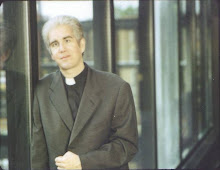“What Sunday after Pentecost is It?”
“So what Sunday is it?” I find myself increasingly asking, both in these Sundays after the Epiphany and as we round the corner from Trinity Sunday into summer. Or, more precisely, “What happened to the Sundays after the Epiphany and the Sundays after Pentecost?” While the lectionaries that preceded the Revised Common Lectionary (RCL) used a variety of numbering systems for the weeks after Epiphany and Pentecost, including “Nth Sunday after,” “proper,” and “ordinary time,” the RCL suggests two systems: the Arabic lectionary number (Lectionary 15) or the calendar date range for the set of readings (Sunday, July 9-16). Yet, old habits die hard. ELCA congregations appear to be so attached to the designation “Nth Sunday after Pentecost” that you can find “conversion charts” to help negotiate these various numbering systems at the denomination’s worship web page (http://www.elca.org/Growing-In-Faith/Worship/Lectionary.aspx). In five columns, the charts tell you that
If today is…” …it falls within this date range... The “lectionary” number assigned to this date range in Evangelical Lutheran Worship is…” …which is equivalent to “proper ___” in previous printed lectionaries. In 2009, this Sunday is numerically the ‘____ Sunday after Pentecost.
Look up the calendar date in the first column and you will find the correct “Sunday after Pentecost” in the last column.
During these Sundays after Pentecost, preachers also ask me why the readings don’t fit together so well. While for much of the year, the Old Testament reading is closely related to the Gospel reading, from the first Sunday after Trinity Sunday to the end of the church year, the RCL provides both a continuation of the complimentary Old Testament readings and a semi-continuous pattern of Old Testament readings. This year, the semi-continuous readings from the Old Testament focus on the covenant of David and Wisdom literature. Similarly, epistle readings, which are from 1 and 2 Corinthians, Ephesians, James, and Hebrews, are intended to provide a semi-continuous reading of these letters rather than correspond to the Gospel. Depending on what readings are selected, the congregation might hear three parallel reading tracks, which are not intended to fit together. During this time of the year, making the readings fit together frequently requires very “creative” exegesis, and should therefore be avoided.
If you wonder where the Revised Common Lectionary came from, another question I am frequently asked, it is the work of the Consultation on Common Texts, an ecumenical consultation of liturgical scholars and denominational representatives from the United States and Canada who produce liturgical texts for use in common by North American Christian Churches (http://www.commontexts.org/). Gail Ramshaw’s A Three-Year Banquet (Augsburg Fortress, 2004) explains how the Revised Common Lectionary was developed and how the gospels, the first readings and the epistles are assigned. I find Fritz West’s Scripture and Memory: The Ecumenical Hermeneutic of the Three-Year Lectionary (Liturgical Press, 1997) very helpful. An outline of the lecture “Lectionary Patterns and Strategies,” which is part of the required preaching course I teach and includes strategies from departing from the lectionary, is available on my web site. Visit http://craigasatterlee.com and click the Preaching tab.
I am a lectionary preacher because the lectionary compels me to listen to God before I dare to say anything. I get really frustrated when preachers spend sermon time bashing the lectionary; what is most obvious to me is that they do not understand what the lectionary is (and is not) designed to do. As we begin this “ordinary time,” when the lectionary becomes a bit less ordinary, preaching is richer for the congregation and more joyous for the preacher when the preacher understands what the lectionary is trying to do.
Wednesday, January 21, 2009
Subscribe to:
Post Comments (Atom)

No comments:
Post a Comment